Upon first look, Paul Rouphail‘s still lifes are vibrant and immaculately detailed. It’s within those details and with his proclivity towards surrealism, however, that make his work memorable, head-turning, and unexpected. Within domestic interiors, Rouphail depicts objects as mundane as a cup of coffee or even a Five Hour Energy shot, but in doing so, he reimagines these spaces not only as the vessel by which he can express the curious forms stemming from his brilliant mind, but as an integral part of the still life as well. In other words, the space acts as a fundamental element to his work, becoming characters just as vital as the objects housed within. Some of these items form curious faces on the wall, some of the familiar objects might be in strange positions, or presented under different circumstances than that which we are so used to seeing them. Among these strange, yet recognizable settings, we ask; what do you see?
Where are you from originally and when did art first enter your life?
I was born in Chicago and I was raised in Raleigh, North Carolina. My first formal experience with painting was at the age of twelve when my mother purchased a small set of oil colors for me. My parents also had a first edition Edward Hopper monograph that I always loved to look through. I come from a rather creative family as well. My mother, Maria Rouphail, is a poet, and my maternal grandfather—who immigrated from Cuba in the 20s—was a respected Sunday painter. My aunt is a photographer. My maternal uncle was also an artist and my paternal grandfather was an accomplished architect in Egypt.
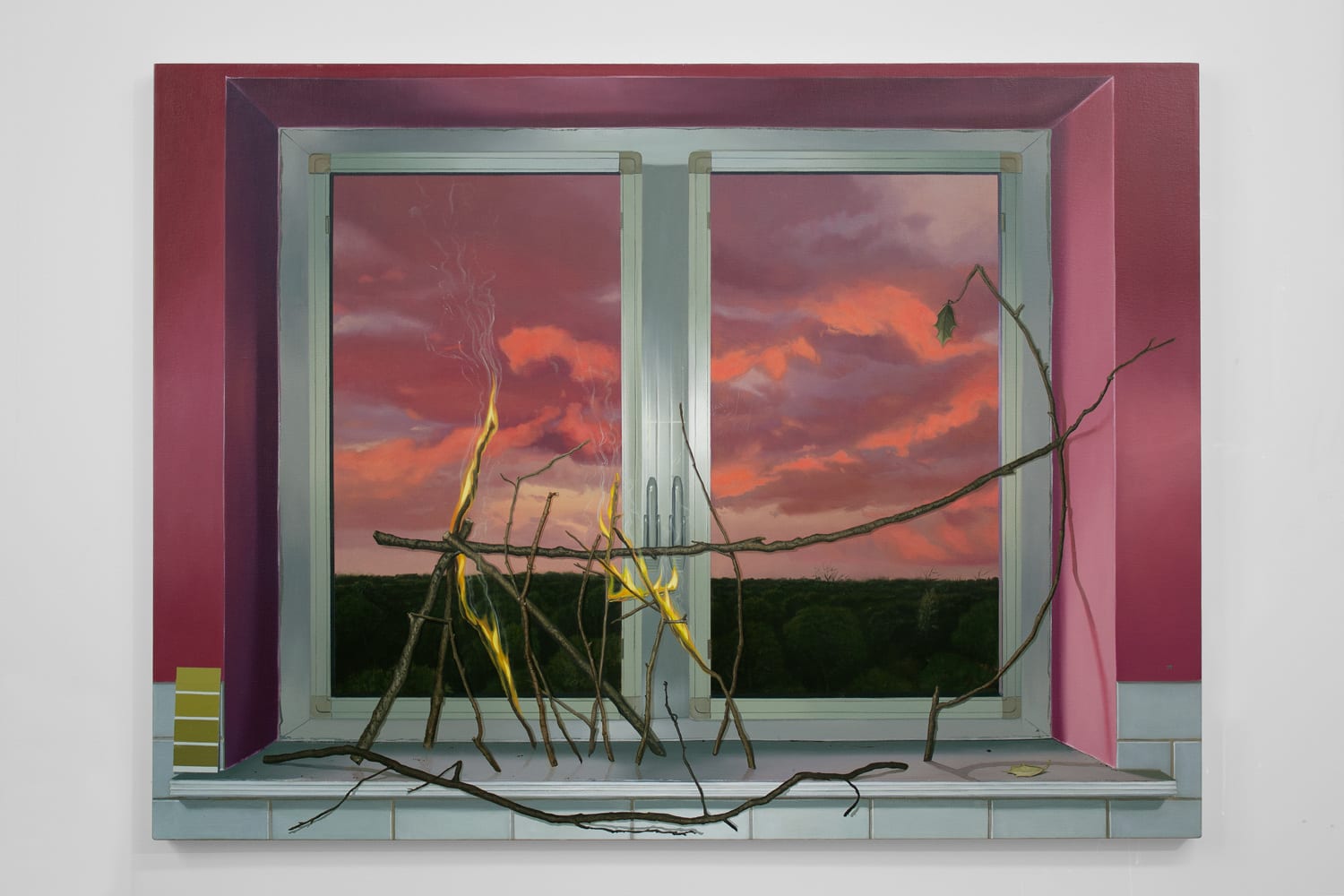
Courtesy of the artist and Stems Gallery, Brussels (2019).
Have you always painted in your current style?
At the moment I paint representationally, though the manner in which I paint differs slightly from project to project. My painting strategy can determine the interpretation of my subjects in a variety of ways. That being said, I think the arc of my work over the years is somewhat legible: for every new work made, a painting inherits some elements of its predecessor and simultaneously gains something new. Sometimes that new element is clear, other times it’s present merely to me.
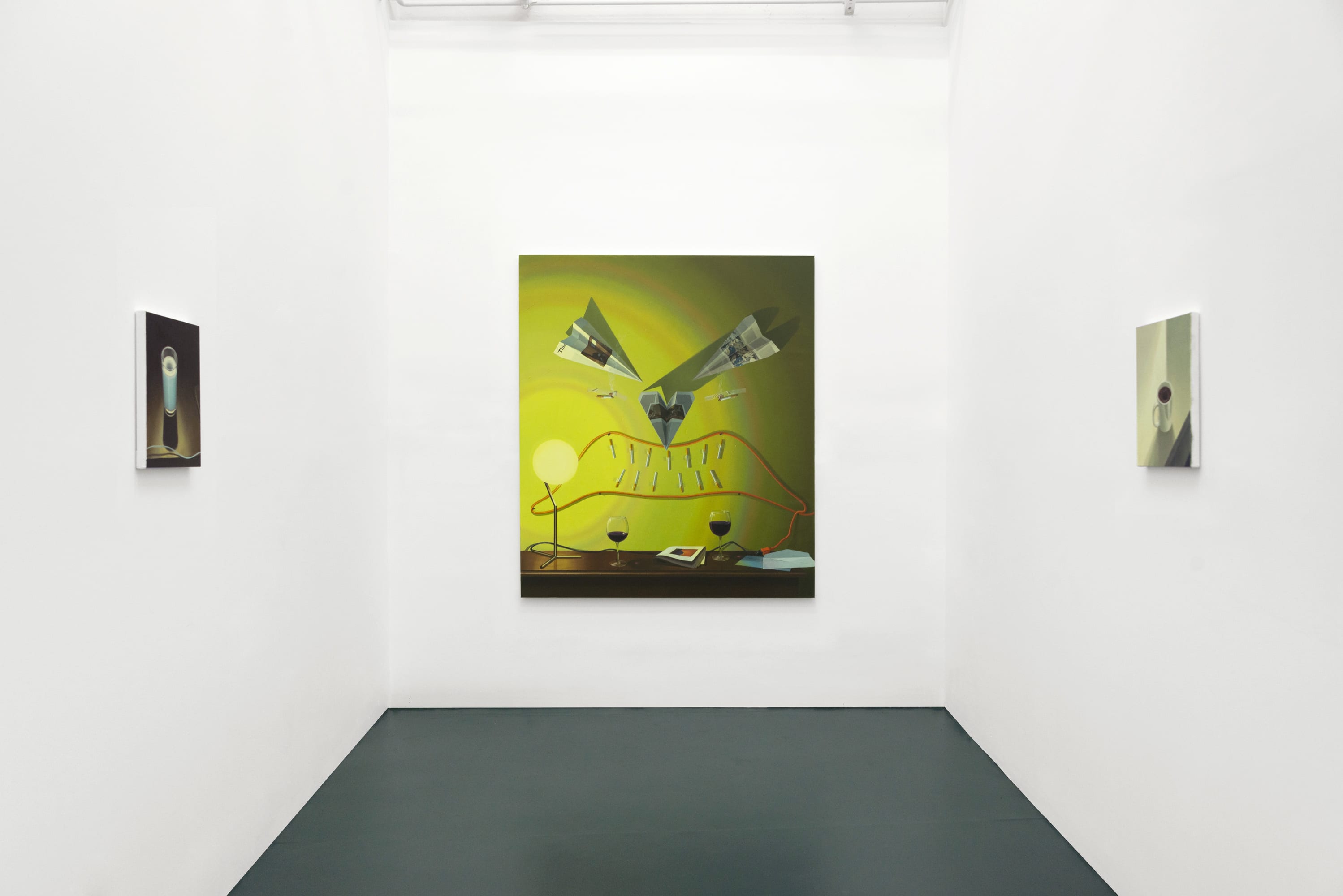
Installation view. Courtesy of the artist and SMART OBJECTS, Los Angeles (2020).
What attracted you to landscape and interior painting versus figurative painting or another genre?
Personally, I do not have a moratorium on painting figures. Nor do I feel that there is value in delineating figurative and non-figurative work. I suppose it comes down to figuring out how can one depict human experience without picturing a person. By that measure, I think there are figures in my paintings. They are are just off-stage, as it were. They’re present in the world I’m depicting, but not necessarily in the image itself.
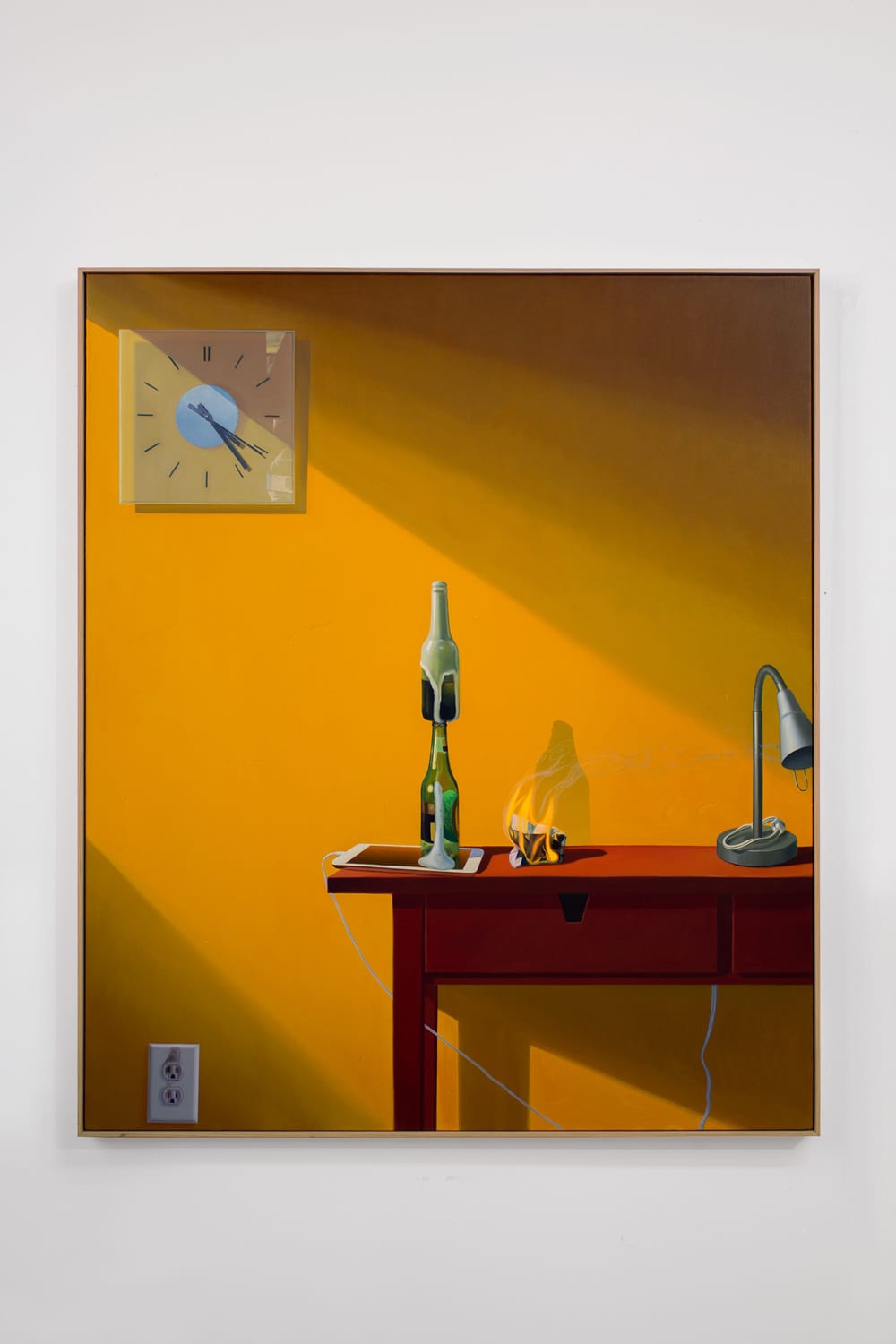
Courtesy of the artist and Stems Gallery, Brussels (2019).
Could you describe your ideal day in the studio? How do you begin a work and what does that process look like?
It takes me weeks (and sometimes months) to figure out what a new body of work might look like. I make small drawings and some very undeveloped photoshop collages. Once I feel I have a base from which to work, I spend long hours in my studio developing as many paintings as I can at once. This stage is always a major pain in the ass, but I enjoy it. It’s like diving into a cold lake. After a few weeks I usually develop a working rhythm that feels productive. No two days in studio are the same.
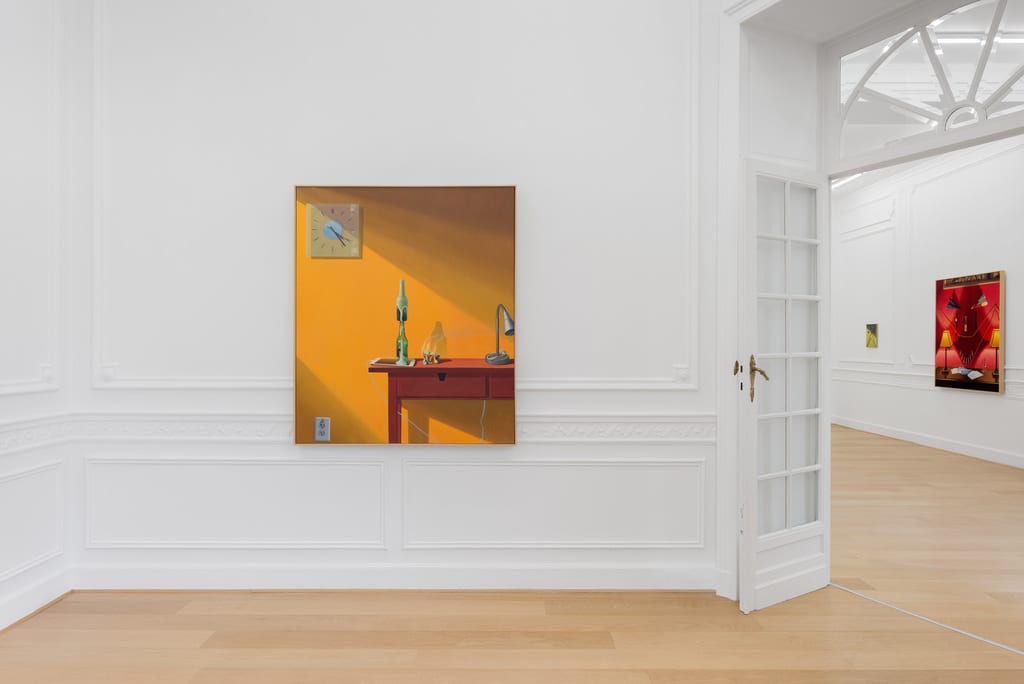
Installation view. Courtesy of the artist and Stems Gallery, Brussels (2019).
You also teach painting at the Maryland Institute College of Art. How have you come to appreciate art from the perspective of an artist as well as an educator?
Yes, I’ve taught part-time in a number of institutions. I think every artist should have the experience of teaching others what they do. When I used to live in Perú and taught English, I was surprised by my own lack of comprehension of the intricacies of the English language. It’s the same with painting. Teaching exposes your own aesthetic and technical prejudices and preferences.
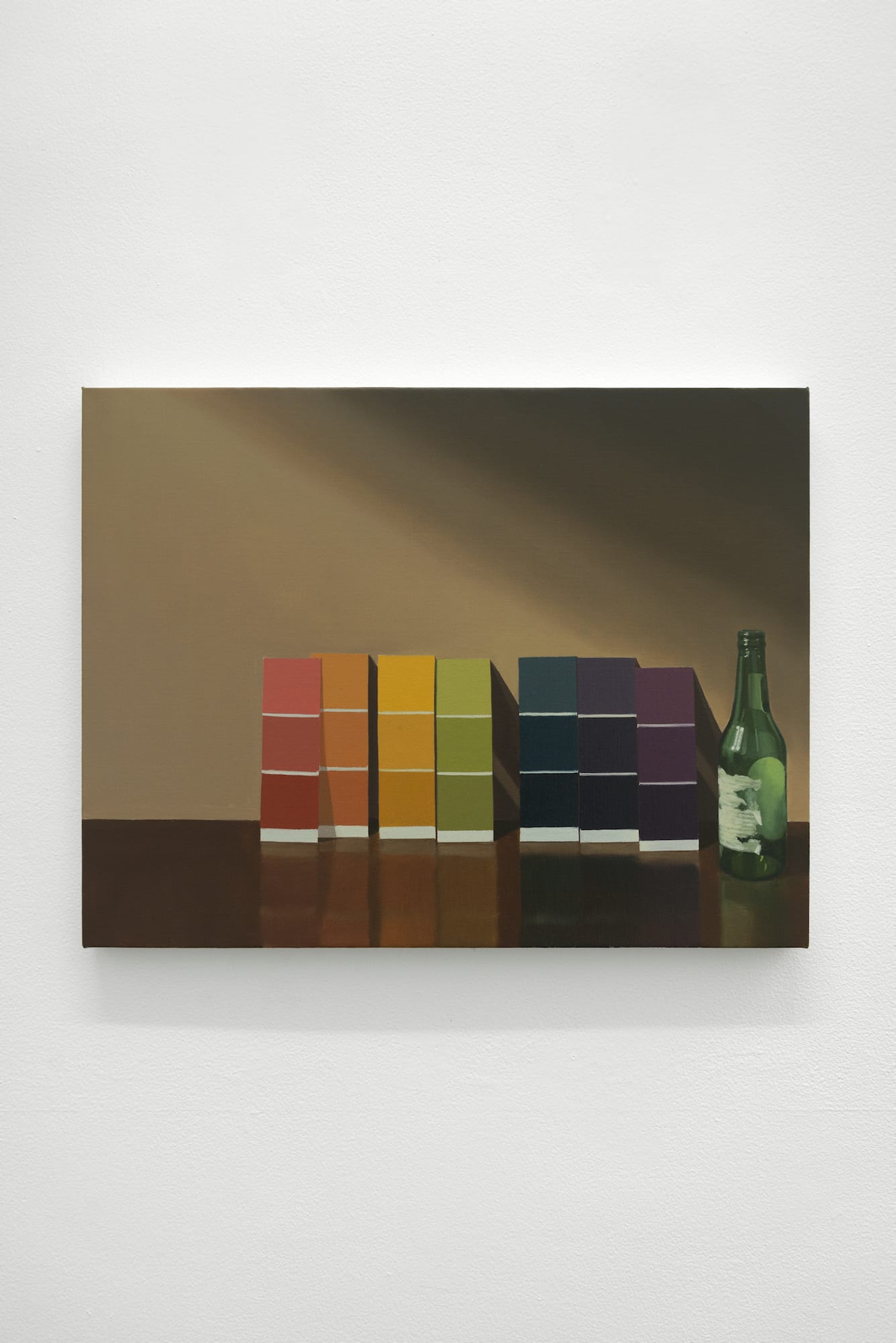
Courtesy of the artist and SMART OBJECTS, Los Angeles (2020).
From where do you draw inspiration?
I read and listen to a lot of music. Recently the work of Steve Reich, and Moondog have been influential to the work I’ve produced.
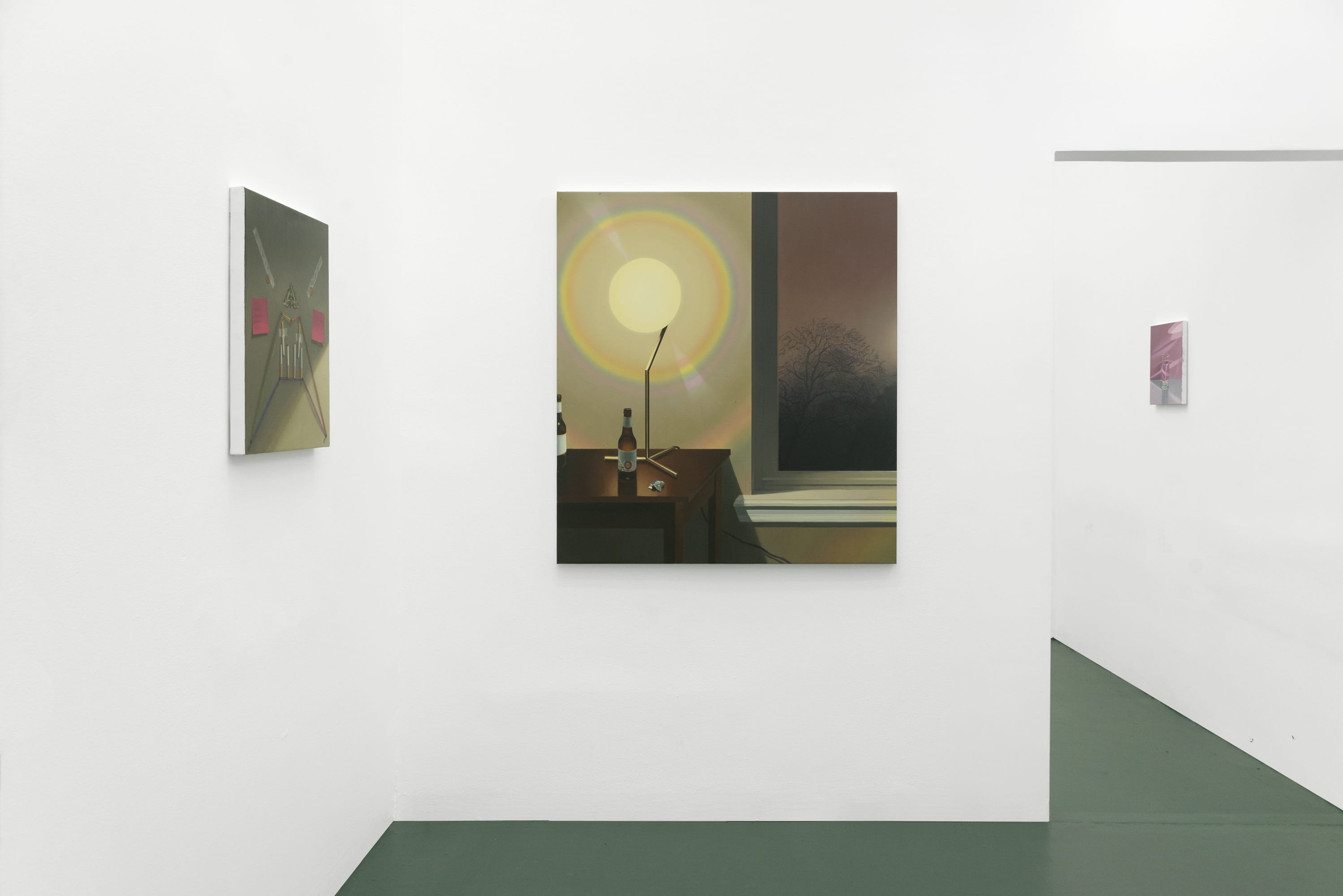
Installation view. Courtesy of the artist and SMART OBJECTS, Los Angeles (2020).
What source material do you base your work off of?
I work from my own photographs and small drawings. I use objects and spaces from my own home in Philadelphia as reference materials.
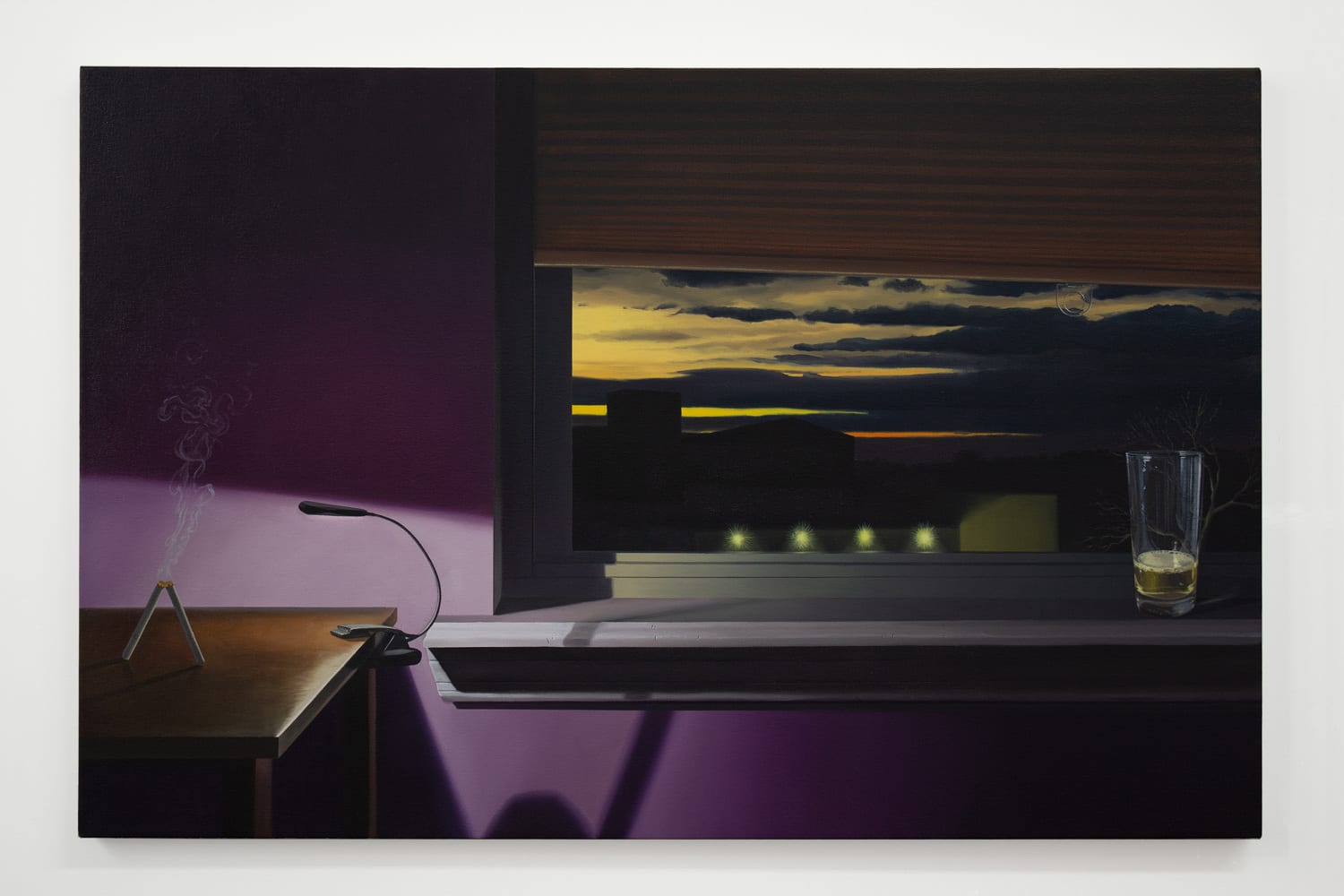
Courtesy of the artist and Stems Gallery, Brussels (2019).
Does your work reference any Art Historical movements or figures?
I do not intend to reference any particular movement or artists. There are a few quotations of Horace Pippen in my recent show. There are often moments, however, where my references are lifted from literature or music, rather than visual art. The poetry of Zbigniev Herbert, for example, is very important to me.
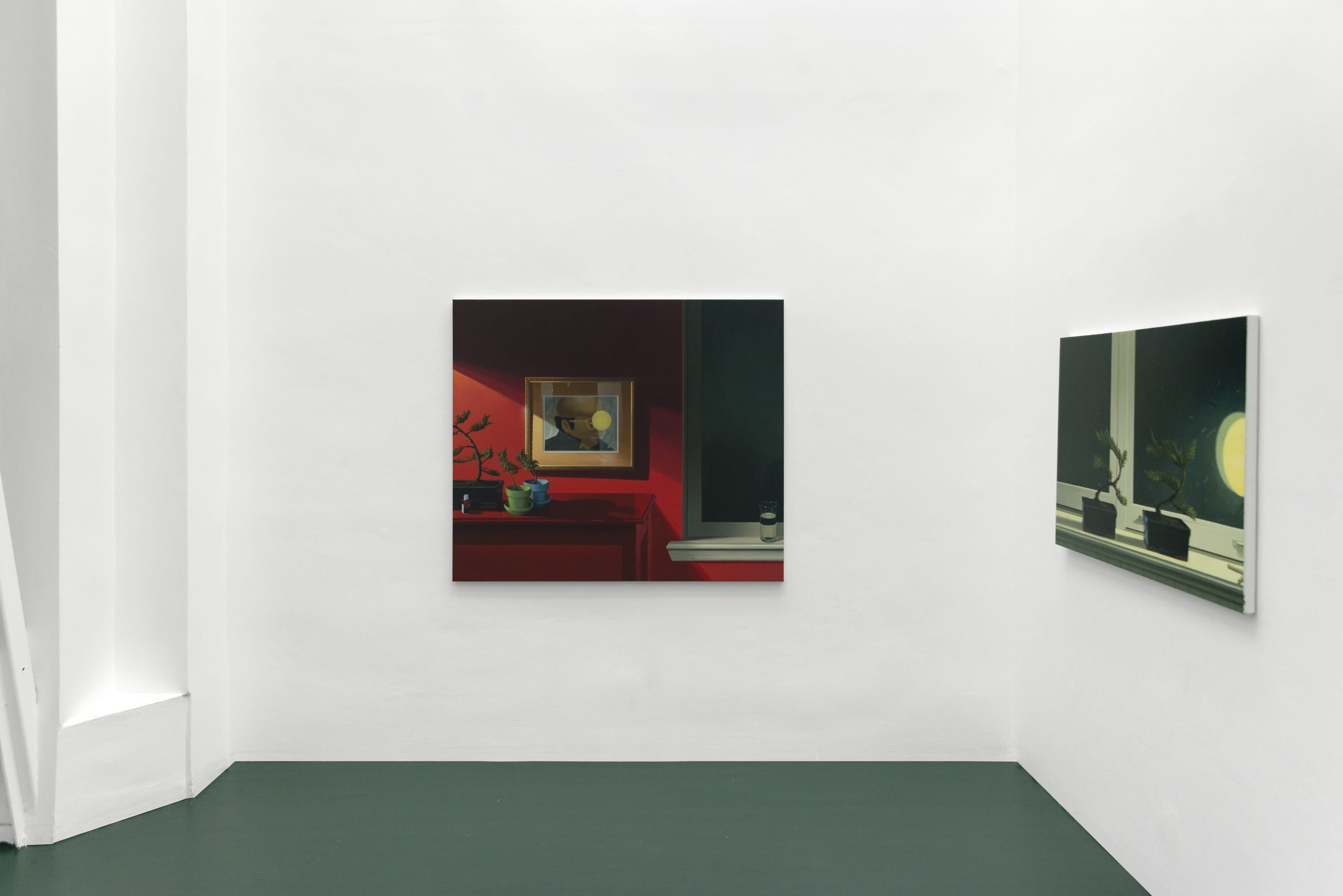
Installation view. Courtesy of the artist and SMART OBJECTS, Los Angeles (2020).
Are there any larger questions you hope to explore in your work? If so, what do you think people experience when looking at a Rouphail original?
I try to answer small questions in my work: some formal, others theoretical. The questions the paintings propose are always rhetorical, however. I’m not interested in making blanket statements, nor can I, really, through painting still-lives. I want my paintings to be vehicles rather than destinations. That is, that the paintings can feel so uncannily familiar that the idea of them can fit in your pocket. You take them with you. So much so that when you’re alone in a room, the memory and energy of the painting might reemerge.
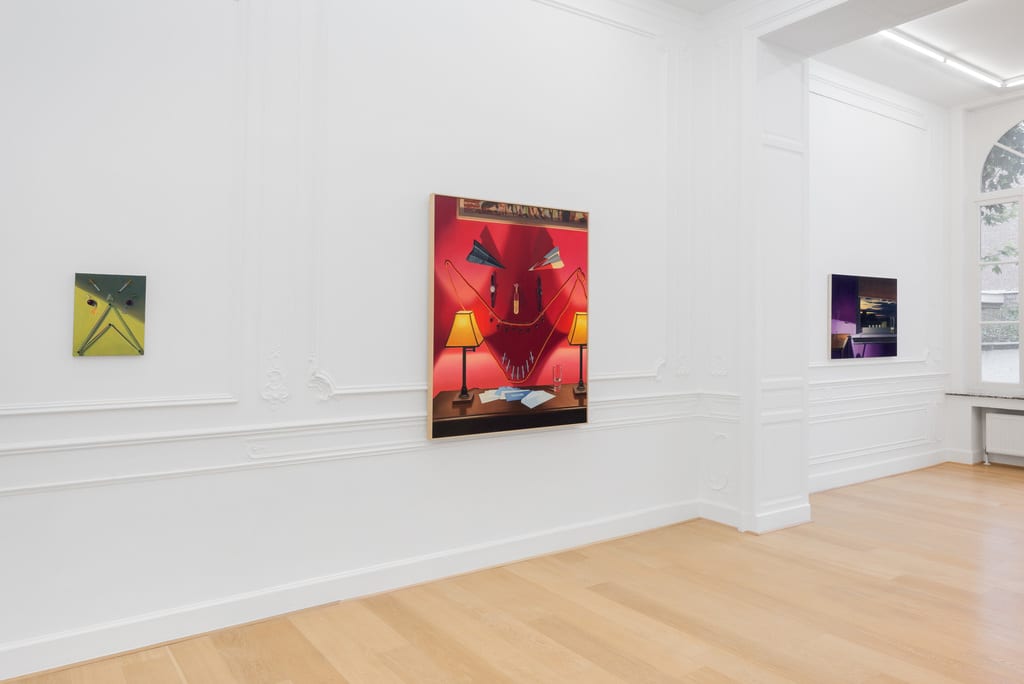
Installation view. Courtesy of the artist and Stems Gallery, Brussels (2019).
What do you have coming up?
My solo exhibition with SMART OBJECTS in Los Angeles just ended in July. I will have another solo exhibition entitled “Future Machine” that opens at Jack Barrett in New York this September. I’m also in group show with Tong Art Advisory in East Hampton up through September 8th. For 2021, I have a few projects lined up with Stems Gallery in Brussels.
At the end of every interview, we like to ask the artist to recommend a friend whose work you love for us to interview next. Who would you suggest?
My good friend and fellow artist, Ziyang Wu.